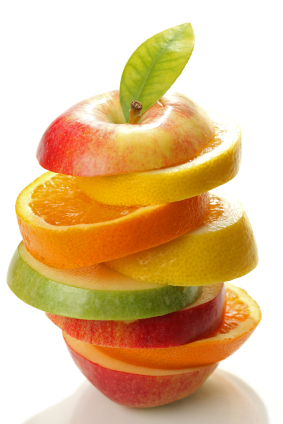For years, scientists have been trying to develop a test that can illustrate the antioxidant capacity of foods. This information would provide evidence for which foods are “super-antioxidants” and potentially are best at reducing oxidative stress and supporting the health of cells in the body.
Oxygen Radical Absorbance Capacity (ORAC), developed by Dr. Richard Cutler of the National Institute on Aging, is a test used to measure the antioxidant potential of foods. It determines how many free radicals (the cause of oxidative stress) a food can absorb (1). The test generates a score based on comparison with a control—the higher the score, the more antioxidant activity the food has. It is useful for comparing different variations of the same product, say two kinds of dark chocolate; however, it is not useful in comparing the antioxidant activity of different items, say apples to oranges.
The main shortcoming of ORAC testing is that the results cannot be translated to real antioxidant protection in the body. The test is conducted in-vitro, meaning that it is done in a test tube and not in the body. Recently the USDA removed the ORAC database from their website due to, “mounting evidence that the values indicating antioxidant capacity have no relevance to the effects of specific bioactive compounds, including polyphenols on human health.”
The USDA wrote, “ORAC values are routinely misused by food and dietary supplement manufacturing companies to promote their products and by consumers to guide their food and dietary supplement choices.”
While many bioactive compounds are shown to have health benefits and play a role in disease prevention, ORAC scores are not valid indicators for how the antioxidant properties of food act in vivo, or in the body.
In addition to the ORAC test, there are other measures of antioxidant capacity including ferric ion reducing antioxidant power (FRAP) and trolox equivalence antioxidant capacity (TEAC) assays. The measure of antioxidant activity depends greatly on the technology and oxidant or radical source used. Since these tests use different mechanisms to determine antioxidant function, the results cannot be compared directly (2).
As you can see, while the science in this field is growing rapidly, the current methods lack the desired degree of validity, specificity, and reliability. Instead, researchers have been putting more emphasis on the variety of foods consumed to supply the body with an assortment of phytochemicals, each of which have different mechanisms of fighting oxidative stress. A clear example is resveratrol—the phytochemical has a poor ORAC score, but recent studies attest to its efficacy in reducing oxidative stress in humans by other mechanisms (3).
Isagenix products provide you with just that—variety. If you’re looking to truly beat oxidative stress, you’ll need a variety of antioxidant vitamins, minerals, and bioactive compounds. With Isagenix products including Ageless Essentials Daily Pack and Product B, Isagenix Greens! and Isagenix Fruits, you’ll get the right combination of nutrients along with a potent array of more than 30 different fruits and vegetables. For now, variety is the most reliable method for combating oxidative stress.
References
- Cao G, Alessio HM, Cutler RG. Oxygen-radical absorbance capacity assay for antioxidants. Free Radic Biol Med 1993;14:303-11. doi: 10.1016/0891-5849(93)90027-R
- Cao G, Prior RL. Comparison of different analytical methods for assessing total antioxidant capacity of human serum. Clin Chem 1998;44:1309-15.
- Park S-J et al. Resveratrol Ameliorates Aging-Related Metabolic Phenotypes by Inhibiting cAMP Phosphodiesterases. Cell 2012;148:421-433. doi: 10.1016/j.cell.2012.01.017
The post Focus on Variety, Not ORAC appeared first on Isagenix Health.
Source: IsagenixHealth.net



You May Also Like
Post-Workout Super Shake
Winter Trail Mix
Apple Spice Granola
IsaDelight Bark With Caramel Brulée Drizzle
Caramel Brulée Cookie Dough Bites
Homestyle Chicken Noodle Soup
BĒA Super Sparkler
Peppermint Mocha Shake
IsaDelight Cashew Butter Cups
Plant-Based Banana Bread
Nature Oat Bake Granola
Nature Oat Bake Isa-Cream Sandwiches
Nature Oat Bake Skewers
BEA Mango Mimosa Slushie
Plant-Based Strawberry Ice Cream
Plant-Based Strawberry Crepes
Plant-Based Strawberry Muffins
Superpower Elixir
Plant-Based Maple Pecan Protein Balls
Immune-Boosting Oats
Celebration BĒA Sparkler
Bone Broth Chicken Gravy
Kale & Sausage Bone Broth Soup
IsaDelight Reindeer Bark
Holiday Charcuterie Board
Leftover Turkey and Vegetable Soup
Protein Chocolate Mug Cake
Vanilla Protein Coffee Creamer
Greens Lavender Iced Matcha Latte
Isagenix Greens Salad Dressing
Everyday Ginger-Infused Cleanse Tea
Choco-Lava Mug Cake